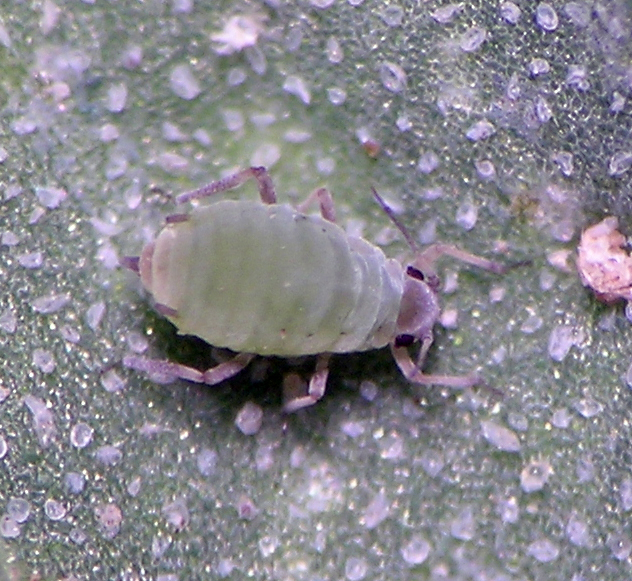Hayhurstia del Guercio
This is a monotypic genus (i.e., it has only one species), represented by Hayhurstia atriplicis (Linnaeus). According to previous accounts, this species lives inside pseudogalls on leaves of its Amaranthaceae hosts, but I usually find it living freely on the leaves without any leaf deformation. It can be extremely abundant in agricultural landscapes because common weeds such as Chenopodium album (lambsquarters) are excellent hosts. This species is widespread in the Northern Hemisphere plus Africa and Central America. I have material from Washington, Oregon, Idaho, Colorado, New Mexico, and Germany.
In collecting in natural systems of the southwestern U.S., I see Hayhurstia on native Chenopodiums that don’t look quite like the samples I see from weedy agricultural landscapes. These specimens often have unusually long siphunculi and extra thick, apically expanded dorsal setae. This makes me wonder whether we have two or more species lumped under this species name. I think such lumping can be easy with a species/genus like this one because it is so easy to recognize — we can quickly say, “yup it’s Hayhurstia” and stop our inquiry because Hayhurstia is known to be monotypic. If there were two or more species to distinguish between, we’d more often sit down and study the species-level distinctions in the group.
One species I think may be related is Landisaphis davisi, which also feeds on native Chenopodium in the western U.S. The main distinctions between these groups being the slightly longer and more clavate siphunculi in Landisaphis, together with its more broadly expanded dorsal setae with spinal abdominal setae mounted on tubercles. Pairs of species like this challenge us to develop good reasons to keep them in separate genera or to join them under one. I think these two ‘species’ deserve more study.


